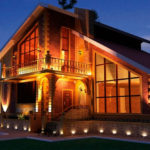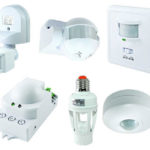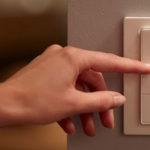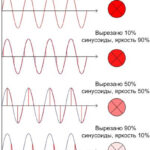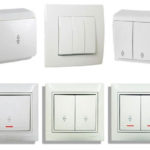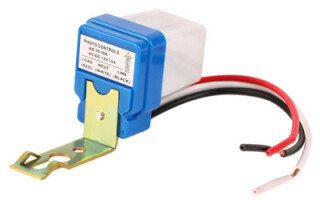The installation of photosensors is now available to ordinary owners of country houses. Such a solution will increase the comfort of the home without large financial investments. You only need to connect the photorelay to the street lamps (to a lantern, spotlight) in order to get rid of the need to independently control the procedure for turning the lighting system on and off.
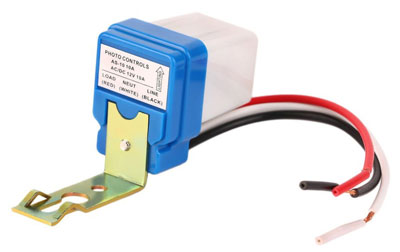
Content
- 1 Basic principles of photorelay operation
- 2 Technical specifications
- 3 The main types of devices
- 4 The nuances of the connection scheme
- 5 Installation work
- 6 Benefits of using a photo relay for street lighting prices
- 7 Possible malfunctions of the mechanism for street lighting
- 8 Video photo relay for switching on and off lighting
Basic principles of photorelay operation
The general principle of operation of the photorelay is similar. The differences between the models are in functionality. The key task of a photorelay for street lighting is to turn on the lighting device when it gets dark and turn off the system when morning comes. First you need to understand what a photo relay is.Understanding the design of the device will allow you to find out how the mechanism works.
The basis of the equipment is a key unit - a motion sensor based on a photosensitive element. The photosensor is connected to the control board with relay contacts, which is responsible for controlling all the parameters of the device. The relay itself has the form of a special device at the output that distributes the load. Depending on the degree of illumination, the photoresistor or photodiode changes its parameters, which leads to the closing of the contacts of the electrical circuit and turning the light on or off.
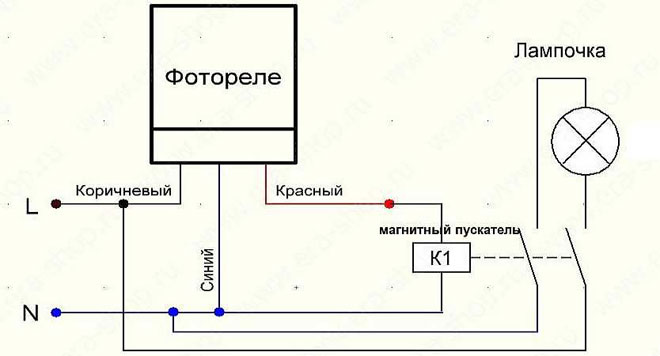
Technical specifications
When choosing a suitable device, you should pay attention to its characteristics. Please refer to the attached passport for details. The key parameters are:
- Power supply voltage. In the standard version, the device operates on 220 V. The choice of options with a voltage of 12 V or 24 V is not the most rational choice due to the need for additional purchase and placement of power supplies.
- The maximum value of the switched current. The indicated characteristic becomes important only if the device is used to control a large number of lighting fixtures. For domestic street lighting systems, the possibilities of the simplest modifications of the device are sufficient.
- The start threshold of the unit is measured in lumens and is given as a range of values. Many models provide the ability to adjust the characteristics.
- Turn-on delay time. Measured in seconds, specified as a range of values.
- The turn-off delay time is a similar setting.
- Required power. It is indicated in the form of two indicators: for standby mode and during active operation.
- Protection level: IP65 or IP40.The first category of devices is suitable for installation outdoors, the second - only in a dry room.
The following parameters are also considered important: operating temperature range, dimensions, installation methods, power supply connections.
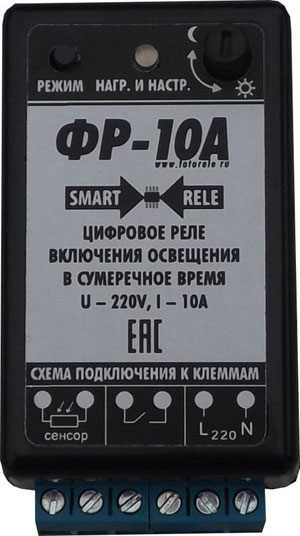
The main types of devices
The following types of photorelay for street lighting system are most popular:
- With a photocell located inside the housing. This option is optimal from the position of full automation of the external lighting system. The devices are equipped with a sealed housing, the transparent part of which is located opposite the photocell.
- With a photocell placed inside and equipped with a timer. Thanks to the presence of a timer, it is possible to automatically turn off the lighting system after a set period of time. The range includes photorelays that involve programming for a day, a week or more.
- With remote photo sensor. This type of configuration is reliable in operation. Electronic components are installed indoors, while a temperature-resistant photocell is placed outdoors.
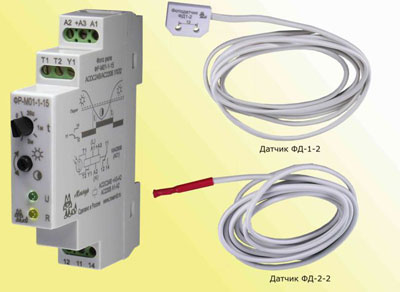
Choose the right model according to your requirements and available budget. In addition to standard photosensors, it is possible to use combined options: motion sensors or temporary sensors. If there is a timer in the device, the operation of the mechanism is carried out in accordance with the time of day. Models equipped with a sensor, a built-in timer and a motion sensor at the same time are the most rare. The devices are equipped with a special display and allow you to set one or another lighting program.
The nuances of the connection scheme
Several mounting options are available. The choice of one or another scheme for connecting a photorelay for street lighting is due to the design features of the modules used.
Features of connecting with three terminals
If there are three terminals on the body of the unit at once, the process of connecting wires is organized as follows. The brown cable must be connected to the phase inlet of the mounting box. The blue drive is connected to the zero element, while the red wire is connected to the terminal on the body of the mounting box, where the phase goes to the lighting fixture.
Connection with two leads
If there are only two pins on the device case, the connection process is somewhat simplified. The phase inlet is connected to a suitable element on the mounting box. In the same way, the neutral wire is connected to the terminal on the photo relay housing. By analogy, lighting fixtures are connected.
The presence of one pair of terminals at the input is sufficient to control several lighting devices. The wires are connected to the photorelay regulator in a parallel way.
Installation work
The connection of the photorelay can be done by hand, without the involvement of professionals. In the case of sealed models of the device, fastening is carried out using an external bracket. The installation of a photorelay for street lighting is carried out by means of screws for connecting elements mounted in the holes in the device case. The remote type sensor is mounted outside the house. There are a number of rules on how to connect a photorelay to lighting:
- for installation, it is necessary to choose a place lit by the sun;
- shadows from awnings, fences, high walls should be avoided;
- it must be borne in mind that in the warm season, blossoming foliage on trees can become an obstacle to the normal functioning of the equipment.
If necessary, any retrofitting of the device can be done by hand, without resorting to the services of electricians.
Competent adjustment of the photo relay is performed as follows. Under the cap of the photo sensor there is a round knob - turning it changes the sensitivity of the sensor. It should be set to the extreme first position. Then you need to connect the photocell to the mains and at the time when you want to turn on the street lighting, turn the lever until the sensor signal. By leaving the lever in the indicated position, you will ensure that the system starts correctly at a given level of illumination.
Benefits of using a photo relay for street lighting prices
Installing a photosensor as a component of a lighting system is advantageous for a number of reasons. As a result of the use of modern technology, the comfort of living conditions on the territory is increased.
Those who installed a photorelay on their house plot managed to appreciate its undeniable advantages:
- Provides convenience of work with system of external lighting. It becomes as simple as possible to turn on street lighting - this task is assigned to the installed device.
- Saves electricity consumed by incandescent lamps - lighting is switched on only as needed.
- Extends the life of lamps installed in lighting fixtures.
- Fast actuation - in this parameter it wins in comparison with a mechanical switch.
- Compatibility of the device with almost all types of incandescent lamps - it will not be a problem to choose elements for the lighting system.
- The automatic lighting system performs a security function - it scares off potential intruders.
The obvious benefits of installing a photocell have led to its popularity. Connection and configuration will need to be done once, while the mounted system will serve the owner faithfully for many years.
Possible malfunctions of the mechanism for street lighting
In case of problems with the functioning of the photosensor, the adjustments should be checked. It is necessary to adjust the illumination of lighting fixtures in accordance with the season. When buying a dimmer, you need to consider:
- the general dimensions of the area adjacent to the house;
- the presence of a built-in timer that ensures the correct operation of the equipment and savings in electrical energy consumption;
- the presence of a function for setting the threshold of the sensor in the selected model of the photosensor.
In the photo relay, the settings are easily adjusted, which will eliminate possible malfunctions. False positives are not excluded when pets or random passers-by are moving on the street.
Breakdowns are also possible caused by moisture ingress into the device or a malfunction of the board element that burned out due to a voltage drop in the network. If the device itself is working and configured properly, you should check the wires. It is required to pay special attention to the issue of the integrity of the insulation in each of the sections. If necessary, replacing the cable can solve the problem.
Video photo relay for switching on and off lighting
The installation system of the photorelay is not too complicated - you can handle it yourself. How to properly connect a photocell to turn on the lighting, it is proposed to figure it out with the help of a video. The information contained in it will allow even a person who does not have special knowledge and skills to cope with the task of installing a photorelay.
Similar articles:
